Advanced manufacturing speeding up development of custom electronic connectors for weapons systems.
Tag: Materials Science
A New Approach to Accelerate the Discovery of Quantum Materials
Researchers at Berkeley Lab have successfully demonstrated an innovative approach to find breakthrough materials for quantum applications. The approach uses rapid computing methods to predict the properties of hundreds of materials, identifying short lists of the most promising ones.
High-Speed Camera for Molecules: Entangled Photons Enabled Raman Spectroscopy
This scheme significantly improves the frequency-time resolution of spectra, yielding elaborate HOM interference which enables the selective access of stimulated Raman scattering. In addition, no grating is required for detection, simplifying the experimental setup.
Caught in the Actinium
Researchers grew crystals containing actinium and illuminated them with X-rays to learn how the radioactive metal binds with other elements. That information could help design better cancer treatments.
Localization of anion exchange membrane water electrolysis is a step forward!
A research team led by Dr. Sung Mook Choi of the Korea Institute of Materials Science(KIMS) has developed a one-step electrode fabrication process for the first time in South Korea.
Detecting defects in tomorrow’s technology
Researchers at the U.S. Department of Energy’s Princeton Plasma Physics Laboratory are applying their expertise in physics, chemistry and computer modeling to create the next generation of computer chips, aiming for processes and materials that will produce chips with smaller features.
Drug delivery via textile fibers
Medical products such as ointments or syringes reach their limits when it comes to delivering medication locally – and above all in a controlled manner over a longer period of time. Empa researchers are therefore developing polymer fibers that can deliver active ingredients precisely over the long term. These “liquid core fibers” contain drugs inside and can be processed into medical textiles.
Speeding through microcosm: new insights into ultrafast electron and lattice dynamics
An article has unlocked new dimensions in understanding the ultrafast processes of charge and energy transfer at the microscale. The research delves into the dynamics of microscopic particles, providing insights that could revolutionize semiconductor and electronic device development.
CityUHK President Prof. Freddy Boey Appointed as HKIAS Senior Fellow
The Hong Kong Institute for Advanced Study (HKIAS) is delighted to announce the appointment of Professor Freddy Boey Yin Chiang as the Senior Fellow of the Institute. Professor Boey, currently serving as the President and Distinguished University Professor of City University of Hong Kong (CityUHK), brings a wealth of experience and expertise to this prestigious role.
HKIAS Senior Fellow Professor Sir John B. Pendry Receives the 2024 Kyoto Prize
The Hong Kong Institute for Advanced Study (HKIAS) is pleased to share that Professor Sir John Pendry, our HKIAS Senior Fellow and Professor of Theoretical Solid State Physics at Imperial College London, has been awarded the 2024 Kyoto Prize in Advanced Technology for his contribution to the Theoretical Construction of Metamaterials in Materials Science.
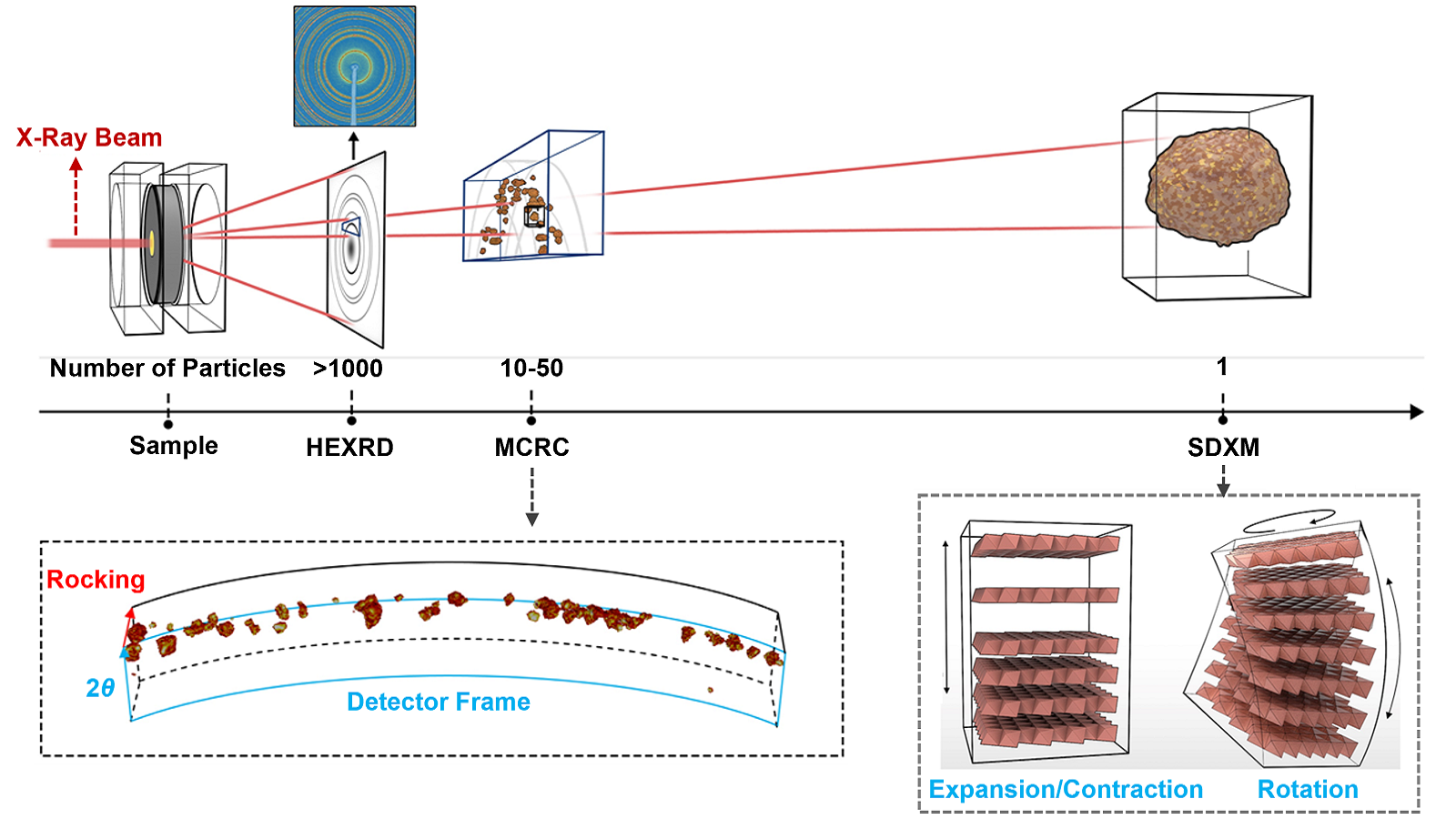
Unlocking the mystery behind the performance decline in a promising cathode material
Researchers at the Argonne National Laboratory have discovered the main reason why and how one of the more promising new cathode materials degrades with repeated cycling of lithium-ion batteries. The team’s new analysis method was key to the discovery.
3 women named to Pitt posts of engineering dean, education dean, head of student affairs
Michele V. Manuel has been named the first women dean at the University of Pittsburgh Swanson School of Engineering, while Eboni Zamani-Gallaher likewise was named dean of the Pitt School of Education and Carla Panzella the vice provost for student affairs, university officials announced.
A Cleaner Way to Produce Ammonia
Ammonia is the starting point for the fertilizers that have secured the world’s food supply for the last century. It’s also a main component of cleaning products, and is even considered as a future carbon-free replacement for fossil fuels in vehicles.
Scientists are shaking up lithium extraction with a different kind of chemistry
Scientists at the Critical Materials Innovation (CMI) Hub, led by the U.S. Department of Energy’s Ames National Laboratory, have developed a new process, mechanochemical extraction of lithium at low temperatures, or MELLT, to increase and diversify the supply of lithium in the United States.
This Alloy is Kinky
A team led by Berkeley Lab has revealed a new metal alloy that resists damage at both hot and cold temperature extremes due to an atomic-level effect called kink bands, making it potentially suitable for demanding applications like more powerful aerospace engines.
New Technique Lets Scientists Create Resistance-Free Electron Channels
Researchers have taken the first atomic-resolution images and demonstrated electrical control of a chiral interface state – an exotic quantum phenomenon that could help researchers advance quantum computing and energy-efficient electronics.
How Scientists Are Accelerating Chemistry Discoveries With Automation
Researchers have developed an automated workflow that could accelerate the discovery of new pharmaceutical drugs and other useful products. The new approach could enable real-time reaction analysis and identify new chemical-reaction products much faster than current laboratory methods.
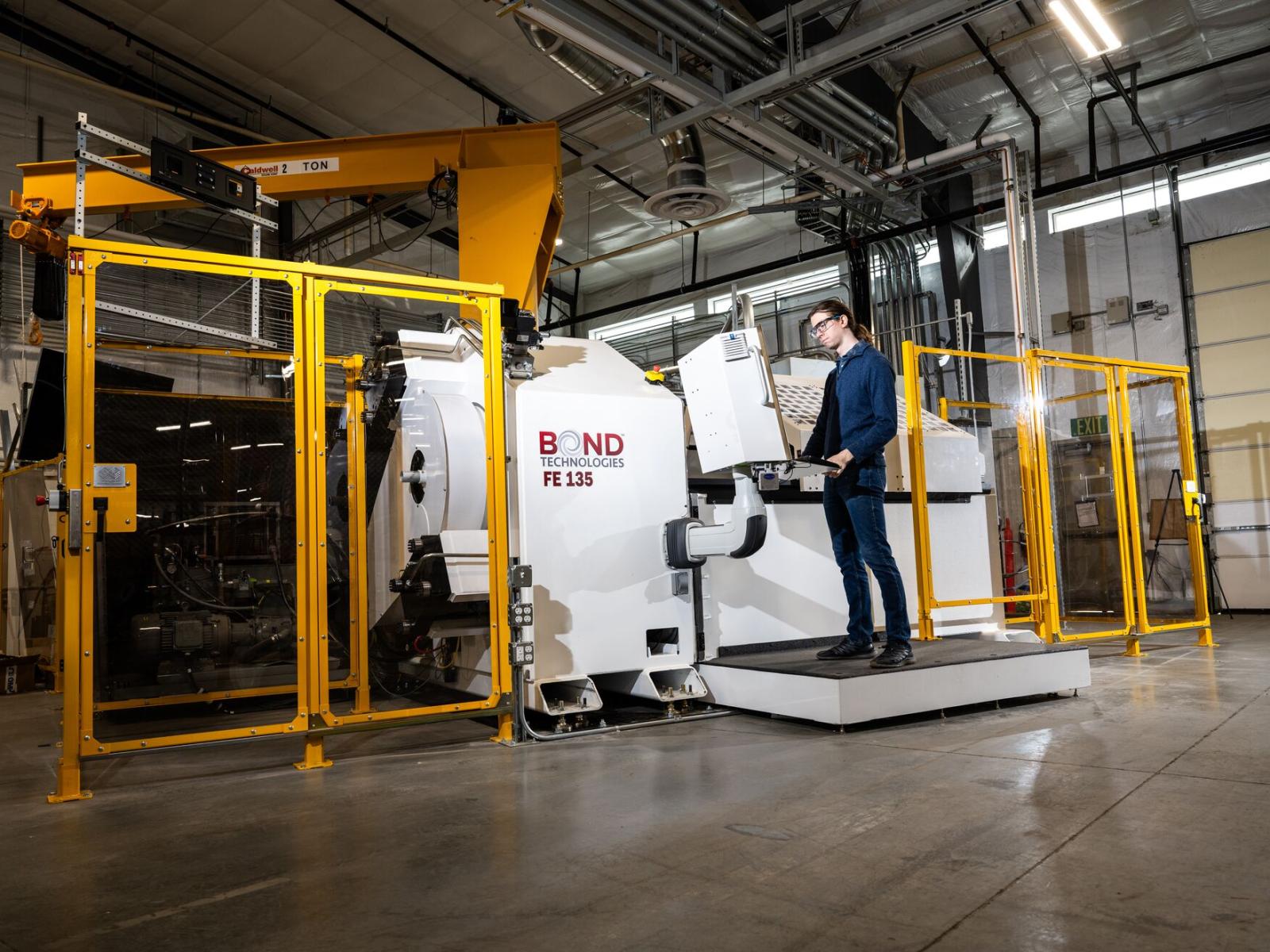
Next-Generation ShAPE™ Metal Extrusion Arrives
The next-generation ShAPE machine has arrived at PNNL, where it will help prove the mettle of the ShAPE extrusion technique. ShAPE 2 is designed to allow researchers to produce larger, more complex extrusions.
Design rules and synthesis of quantum memory candidates
New research Grainger Engineering professor Daniel Shoemaker and graduate student Zachary Riedel used density functional theory (DFT) calculations to identify possible europium (Eu) compounds to serve as a new quantum memory platform.
New AI Model Is a Leap for Autonomous Materials Science
A new AI model developed at PNNL can identify patterns in electron microscope images of materials without requiring human intervention, allowing for more accurate and consistent materials science.
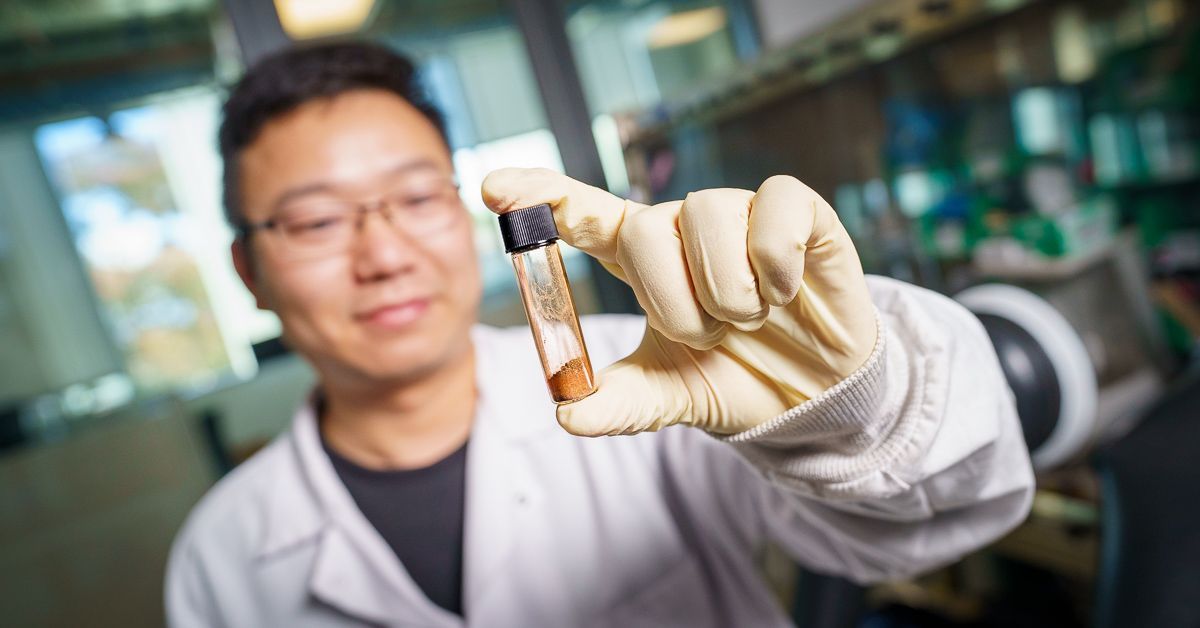
Healable Cathode Could Unlock Potential of Solid-state Lithium-sulfur Batteries
UC San Diego engineers developed a cathode material for lithium-sulfur (Li-S) batteries that is healable and highly conductive, overcoming longstanding challenges of traditional sulfur cathodes. The advance holds promise for bringing more energy dense and low-cost Li-S batteries closer to market.
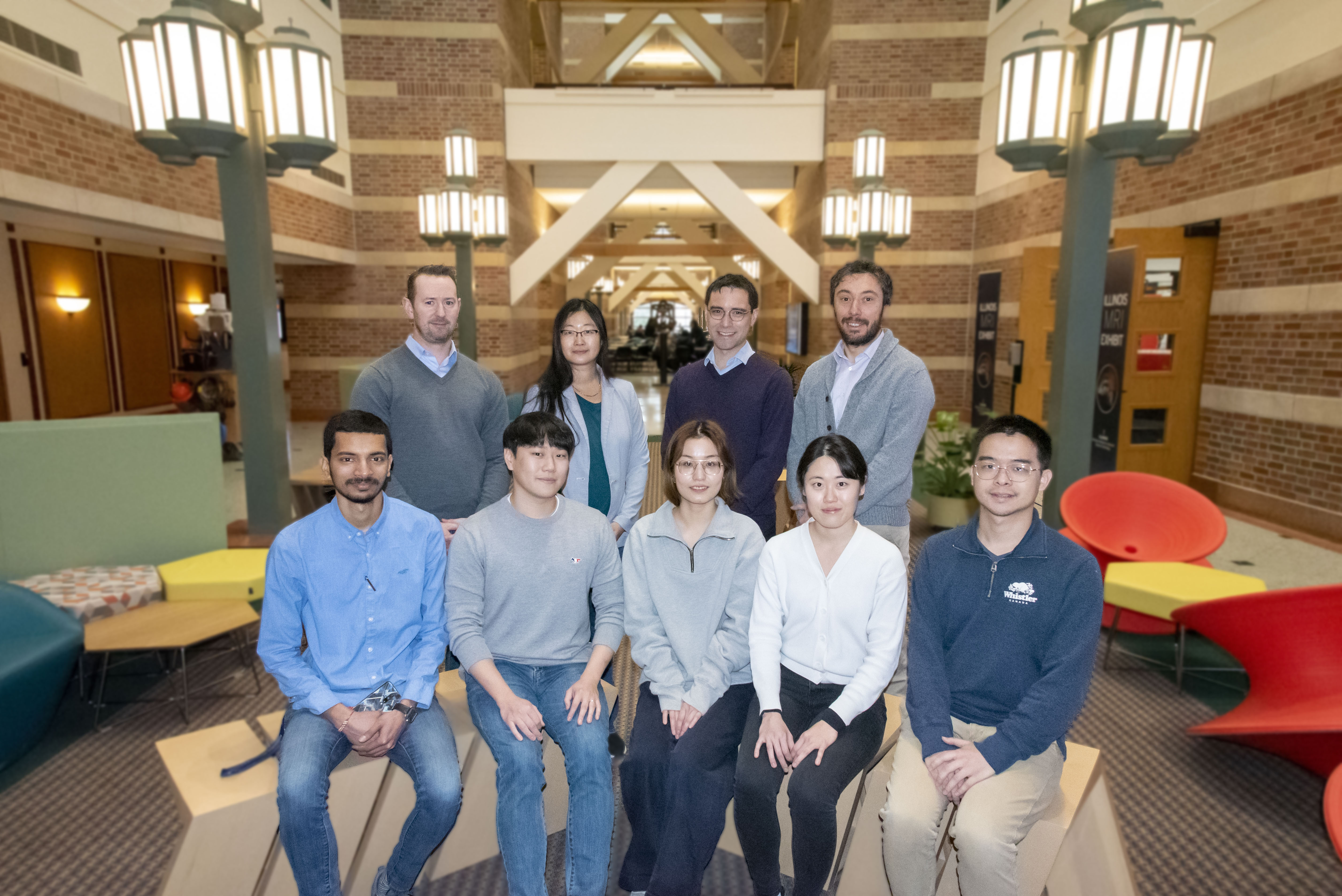
Chameleons inspire new multicolor 3D-printing technology
Inspired by the color-changing ability of chameleons, researchers developed a sustainable technique to 3D-print multiple, dynamic colors from a single ink. “By designing new chemistries and printing processes, we can modulate structural color on the fly to produce color gradients…
Thermally engineering templates for highly ordered self-assembled materials
Researchers at the University of Illinois Urbana-Champaign and the University of Michigan Ann Arbor have developed a template material that carries almost no heat and therefore stops heat transfer between the template material itself and the solidifying eutectic material.
Amy J. Clarke: Then and Now / 2012 Early Career Award Winner
At the Colorado School of Mines, Distinguished Professor in Metallurgical and Materials Engineering Amy J. Clarke studies metals manufacturing. She observes how microscopic structures form and how processing conditions can be modified to affect solidification and defect development.
Researchers demonstrate novel technique to observe molten salt intrusion in nuclear-grade graphite
In response to a renewed international interest in molten salt reactors, researchers from the Department of Energy’s Oak Ridge National Laboratory have developed a novel technique to visualize molten salt intrusion in graphite.
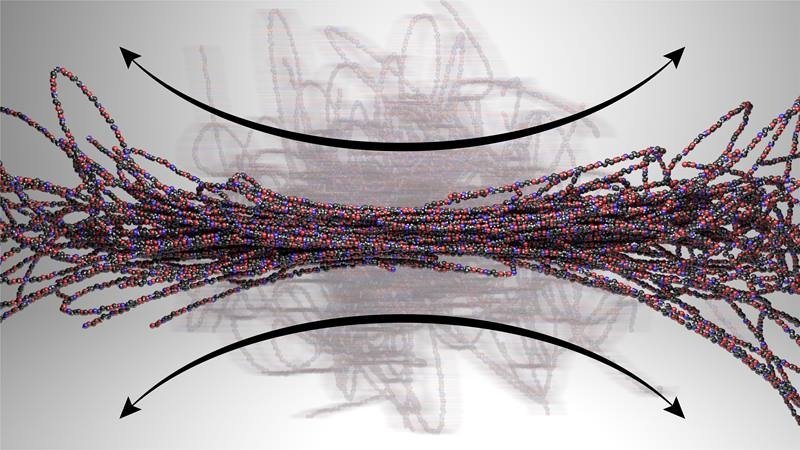
Modeling Polymers for Next-Generation Manufacturing and Sustainability
Polymers experience changing conditions during manufacturing, which can affect their final properties and performance. The way they react to manufacturing forces can be extremely complex and hard to measure. Researchers combined theory and modeling to characterize melted polymers under steady flow and revealed universal features that can inform the design of advanced materials for manufacturing.
‘Plug and play’ nanoparticles could make it easier to tackle various biological targets
UC San Diego engineers have developed modular nanoparticles that can be easily customized to target different biological entities such as tumors, viruses or toxins. The surface of the nanoparticles is engineered to host any biological molecules of choice, making it possible to tailor the nanoparticles for a wide array of applications, ranging from targeted drug delivery to neutralizing biological agents.
Diapers can be recycled 200 times faster with light
Water and UV radiation rapidly and efficiently degrade crosslinked polymers of diaper liners without needing any chemicals – recycled plastic molecules can be used in various ways
Soft, living materials made with algae glow under stress
Researchers have developed soft yet durable 3D-printed materials that glow in response to mechanical stress, such as compression, stretching or twisting. The materials derive their luminescence from single-celled algae known as dinoflagellates, which are embedded within the materials. The work was inspired by the bioluminescent waves caused by dinoflagellates during red tide events at San Diego’s beaches.
Novel approach to advanced electronics, data storage with ferroelectricity
Latest research from Flinders University and UNSW Sydney, published in the American Chemical Society ACS Nano journal, explores switchable polarization in a new class of silicon compatible metal oxides and paves the way for the development of advanced devices including high-density data storage, ultra low energy electronics, flexible energy harvesting and wearable devices.
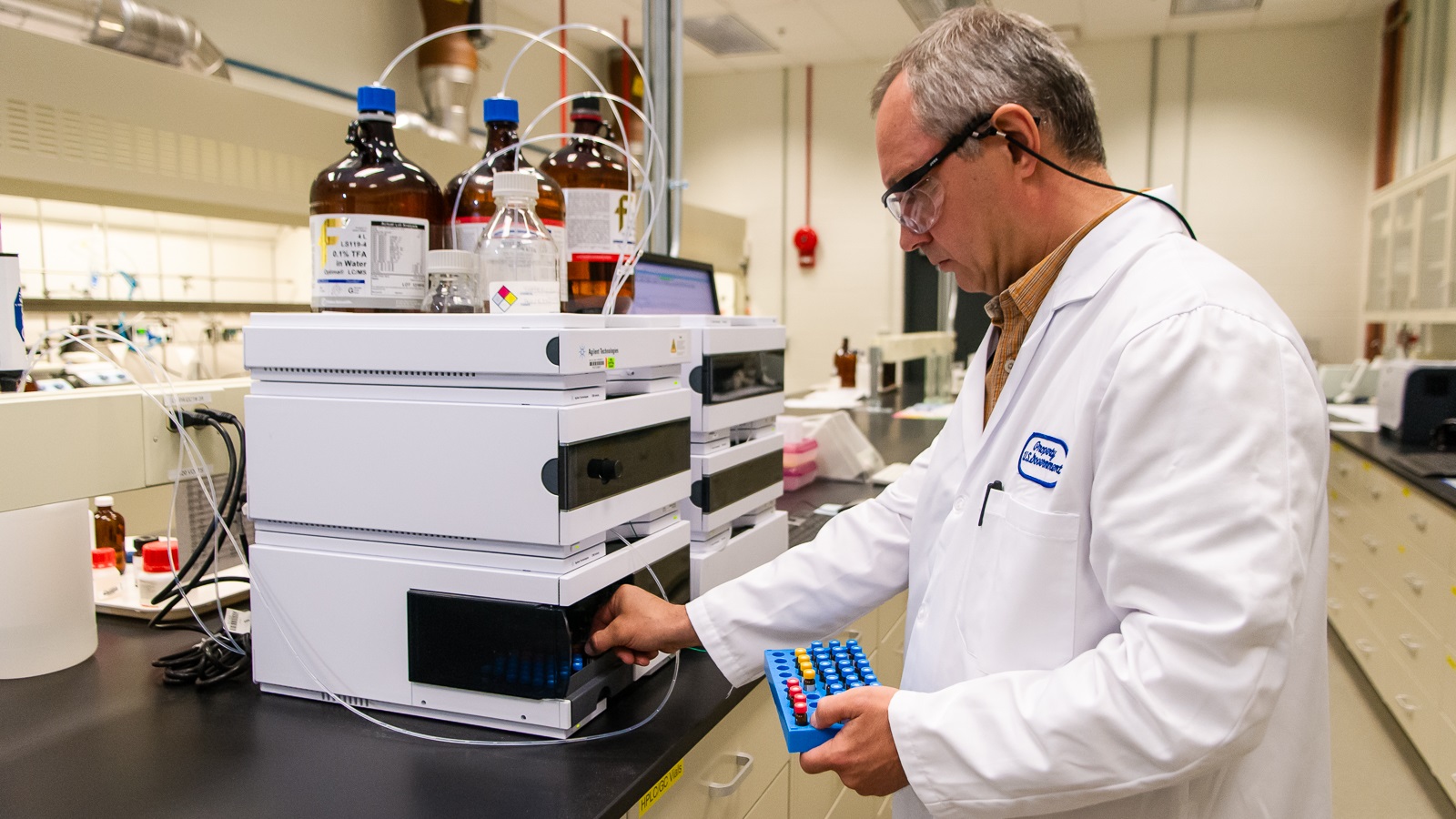
A revolution in the making
Argonne National Laboratory is shaping Industry 4.0 with groundbreaking research into advanced ways of making things more effective, efficient and economical, using the most cutting-edge materials and processes, with the lowest possible environmental impact.
Metal-organic frameworks could someday deliver antibacterial nitric oxide
Researchers still need to get a better understanding of how metal-organic frameworks function, especially when embedded in polymers. Reporting in ACS Applied Materials & Interfaces, researchers have now developed and characterized nitric oxide-storing MOFs embedded in a thin film with novel antibacterial potential.
A real “rock star” moment: New mineral named after Argonne materials scientist Kanatzidis
Mercouri Kanatzidis, an Argonne and Northwestern University materials scientist, has studied sulfur-containing materials called chalcogenides for more than 30 years. A new chalcogenide mineral has just been named for him.
Using artificial intelligence, Argonne scientists develop self-driving microscopy technique
Argonne researchers have tapped into the power of AI to create a new form of autonomous microscopy.

$10 million award from the Department of Defense will fund pioneering Sensing and Cyber Center of Excellence
The Virginia Tech College of Engineering has received a $10 million, five-year Department of Defense award to fund groundbreaking research with potential military and commercial implications.
High-performance, Earth-friendly Materials for Geothermal Wells
The U.S. Department of Energy (DOE) has announced funding for a new research center at Brookhaven National Laboratory focused on exploring the chemical and mechanical properties of cement composites and other materials used in enhanced geothermal systems (EGS).
Accelerating Sustainable Semiconductors With ‘Multielement Ink’
Scientists have demonstrated “multielement ink” – the first “high-entropy” semiconductor that can be processed at low-temperature or room temperature. The new material could enable cost-effective and energy-efficient semiconductor manufacturing.
Nina Andrejevic creates better tools to quickly characterize materials
Understanding big datasets requires better analytical models, says the Maria Goeppert Mayer Fellow.
Scientists uncovered mystery of important material for semiconductors at the surface
A team of scientists with Oak Ridge National Laboratory has investigated the behavior of hafnium oxide, or hafnia, because of its potential for use in novel semiconductor applications.
Making materials more durable through science
A team at Sandia National Laboratories developed a molecule that helps change the way some materials react to temperature fluctuations, which makes them more durable. It’s an application that could be used in everything from plastic phone cases to missiles.
Making Big Leaps in Understanding Nanoscale Gaps
Creating novel materials by combining layers with unique, beneficial properties seems like a fairly intuitive process—stack up the materials and stack up the benefits.
Three Argonne scientists receive 2023 DOE Early Career Awards
Argonne researchers received three DOE Early Career Awards, which will help early-career researchers establish themselves as experts in their fields.
Quantum Material Exhibits “Non-Local” Behavior That Mimics Brain Function
New research from Q-MEEN-C shows that electrical stimuli passed between neighboring electrodes can also affect non-neighboring electrodes. Known as non-locality, this discovery is a crucial milestone toward creating brain-like computers with minimal energy requirements.
Argonne researchers receive funding to build research capacity at historically underrepresented institutions
The U.S. Department of Energy (DOE) announced $37 million in funding for 52 projects to 44 institutions which include Argonne projects. The funding will help build research capacity, infrastructure and expertise at institutions historically underrepresented.
U.S. Department of Energy Announces $37 Million to Build Research Capacity at Historically Underrepresented Institutions
The U.S. Department of Energy (DOE) today announced $37 million in funding for 52 projects to 44 institutions to build research capacity, infrastructure, and expertise at institutions historically underrepresented in DOE’s Office of Science portfolio, including Minority Serving Institutions (MSIs) and Emerging Research Institutions (ERIs).
Midwest Integrated Center for Computational Materials renewed by U.S. Department of Energy
The U.S. Department of Energy has renewed the Midwest Integrated Center for Computational Materials. Its mission is to apply theoretical methods and software to the understanding, simulation and prediction of material properties at the atomic scale.
Department of Energy Announces $28.5 Million for LaserNetUS
Today, the Department of Energy’s Office of Science announced $28.5 million for LaserNetUS to advance discovery science and inertial fusion energy.

Scientists discover unusual ultrafast motion in layered magnetic materials
A team of researchers report a mechanical response across a layered magnetic material tied to changing its electron spin. This response could have important applications in nanodevices requiring ultra-precise and fast motion control.
Burning Calories for Energy in the Calorimetry Lab
Research in the Energy Sciences Center explores how heat changes in chemical reactions, paving the way for more efficient fuels and processes.
New material could hold key to reducing energy consumption in computers and electronics
A University of Minnesota Twin Cities team has, for the first time, synthesized a thin film of a unique topological semimetal material that has the potential to generate more computing power and memory storage while using significantly less energy.